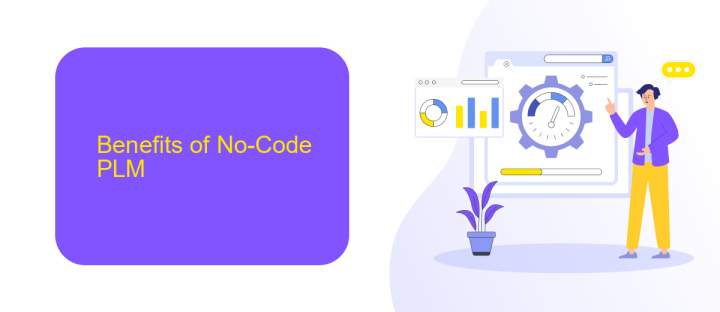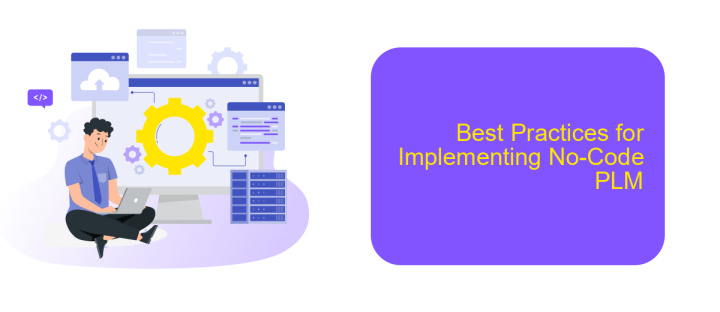No-Code PLM
In today's fast-paced business environment, the demand for agile and efficient solutions is higher than ever. No-Code Product Lifecycle Management (PLM) platforms are revolutionizing the way companies manage their products from conception to retirement. By enabling non-technical users to customize and deploy powerful PLM systems without writing a single line of code, these platforms are democratizing innovation and accelerating time-to-market.
Introduction to No-Code PLM
No-Code PLM (Product Lifecycle Management) is revolutionizing the way businesses manage their products from inception to retirement. By eliminating the need for traditional coding, no-code platforms empower non-technical users to create, modify, and manage PLM processes with ease. This democratization of technology allows for faster implementation, reduced costs, and increased flexibility.
- Streamlined product development
- Enhanced collaboration across teams
- Quick adaptation to market changes
- Cost-effective solutions
One of the key advantages of No-Code PLM is the ability to easily integrate with other systems and tools. Services like ApiX-Drive facilitate seamless integrations, allowing businesses to connect various applications without the need for complex coding. This ensures that data flows smoothly across all platforms, enhancing overall efficiency and productivity. Embracing No-Code PLM can significantly transform how organizations handle their product lifecycle management, making it more agile and responsive to market demands.
Benefits of No-Code PLM

No-Code PLM platforms offer a range of benefits that streamline the product lifecycle management process. One of the primary advantages is the ability to quickly implement and customize workflows without the need for extensive coding knowledge. This empowers businesses to adapt their PLM systems to meet specific needs and changes in the market rapidly. Additionally, it reduces the dependency on IT departments, allowing other teams to take a more active role in managing the product lifecycle, thereby improving efficiency and reducing time-to-market.
Another significant benefit is the ease of integrating various tools and services into the PLM system. For instance, using integration services like ApiX-Drive, businesses can seamlessly connect their PLM platforms with other essential business applications such as CRM, ERP, and marketing tools. This ensures a smooth flow of data across different systems, enhancing collaboration and data accuracy. Moreover, no-code solutions often come with user-friendly interfaces, making it easier for non-technical staff to manage and utilize the system effectively, ultimately leading to increased productivity and innovation.
Challenges of No-Code PLM

No-Code PLM solutions offer significant advantages, but they also come with their own set of challenges. One of the primary concerns is the limited customization options compared to traditional PLM systems. While no-code platforms aim to be user-friendly, they may not provide the depth of customization needed for complex, industry-specific requirements.
- Scalability: No-code platforms may struggle to scale effectively as business requirements grow.
- Integration: Integrating no-code PLM solutions with existing systems can be challenging. Tools like ApiX-Drive can help, but it still requires careful planning and execution.
- Security: Ensuring data security and compliance with industry standards is another significant concern.
- Performance: No-code solutions may not perform as efficiently as custom-developed applications, especially under heavy loads.
- Vendor Lock-in: Relying heavily on a no-code platform can result in vendor lock-in, making it difficult to switch providers or customize further.
Despite these challenges, no-code PLM solutions are evolving rapidly. Businesses must weigh the pros and cons carefully and consider leveraging integration tools like ApiX-Drive to mitigate some of these issues. Proper planning and a clear understanding of limitations can help in making the most out of no-code PLM platforms.
Best Practices for Implementing No-Code PLM

Implementing No-Code PLM (Product Lifecycle Management) solutions can significantly streamline your product development processes, but it's essential to follow best practices to ensure success. Start by thoroughly understanding your organization’s needs and identifying the key processes that will benefit most from a No-Code PLM approach.
Next, ensure that your team is adequately trained and comfortable with the No-Code tools you plan to implement. Providing comprehensive training sessions and resources can help in maximizing the potential of these tools.
- Define clear objectives and goals for your No-Code PLM implementation.
- Choose a scalable and flexible No-Code platform that can grow with your needs.
- Leverage integration tools like ApiX-Drive to connect your No-Code PLM with other essential systems seamlessly.
- Regularly review and optimize your workflows to ensure continuous improvement.
Finally, gather feedback from your team and stakeholders to make necessary adjustments. Continuous evaluation and optimization will help in maintaining the efficiency and effectiveness of your No-Code PLM system, ensuring it meets your evolving business needs.


Future of No-Code PLM
The future of No-Code PLM (Product Lifecycle Management) is poised to revolutionize how businesses manage product development and lifecycle processes. With advancements in no-code platforms, companies can now create and customize PLM systems without the need for extensive coding knowledge. This democratization of technology empowers teams to streamline workflows, enhance collaboration, and accelerate time-to-market. As more organizations adopt no-code solutions, the barrier to entry for robust PLM systems is significantly lowered, enabling even small and medium-sized enterprises to compete on a global scale.
Integration capabilities will play a crucial role in the evolution of No-Code PLM. Services like ApiX-Drive allow businesses to effortlessly connect various software applications, ensuring seamless data flow and real-time updates across different systems. This not only enhances operational efficiency but also provides a holistic view of the product lifecycle, from inception to end-of-life. As the no-code movement continues to gain momentum, the future of PLM will be characterized by greater flexibility, reduced costs, and improved agility, making it an indispensable tool for modern enterprises.
FAQ
What is No-Code PLM?
How does No-Code PLM benefit my business?
Can No-Code PLM integrate with other software tools we use?
Is No-Code PLM secure?
Do I need technical expertise to use No-Code PLM?
Do you want to achieve your goals in business, career and life faster and better? Do it with ApiX-Drive – a tool that will remove a significant part of the routine from workflows and free up additional time to achieve your goals. Test the capabilities of Apix-Drive for free – see for yourself the effectiveness of the tool.

